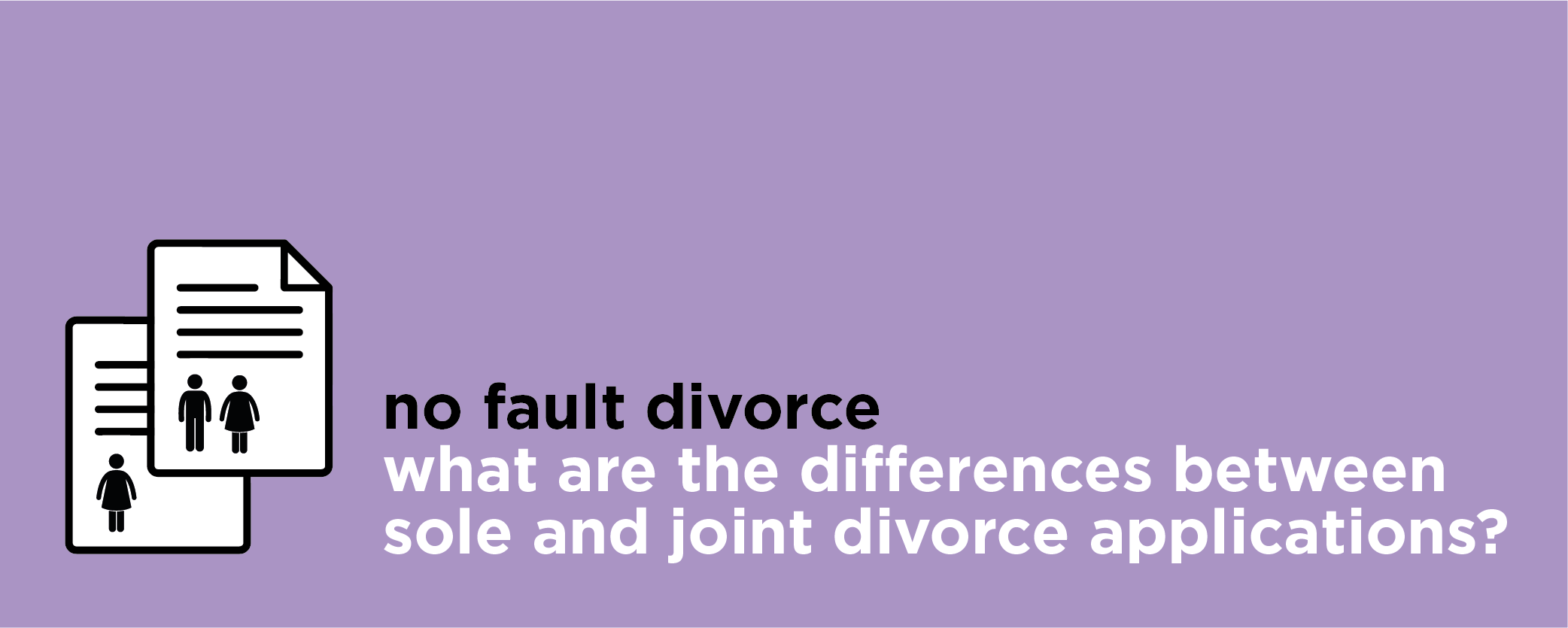- Basildon 01268244144
- Chelmsford 01245453800
- Colchester 01206217300
- London 020 4586 1280
No Fault Divorce - What's the difference between sole and joint divorce applications?

The new Divorce, Dissolution and Separation Act (DDSA), introduced on 6 April 2022, represents the biggest reform of divorce law in half a century and aims to lessen the impact that conflict and allegations have on families, with particular consideration to the involvement of children.
The act has reformed the law on divorce, dissolution and separation, removing the requirement to provide evidence of ‘conduct’ or separation facts, replacing this with a statement of irretrievable breakdown, providing the framework for no-fault divorce for the first time in England and Wales.
In conjunction with this, the act has removed the ability to defend the decision to divorce or end civil partnership.
Divorce and dissolution applications can now only be disputed on jurisdictional grounds, the validity of the marriage or civil partnership, fraud, or procedural compliance.
The new act has enabled separating couples to apply for divorce jointly, therefore eliminating the need for blame. The DDSA has brought divorce law in line with the government’s approach to family justice, avoiding conflict where possible, whilst reducing the negative and detrimental effects separation can have on children.
Under the new law, applications to bring a marriage or civil partnership to an end can be made either jointly or individually.
Sole applications
A standard application is known as a ‘sole’ application, filed by one spouse/partner to be served to the other, who then has the opportunity to file a response. In a sole application, the person applying is addressed as the applicant or sole applicant and their spouse or civil partner addressed as the respondent.
Within a sole application process, applicants will not be able to change their application into a joint application, so the decision on whether to apply solely or together with the other party must be made upon initial application.
Joint applications
A joint application (for divorce, judicial separation, or the termination of a civil partnership), will require both parties to apply together and they will be known as joint applicants. Parties will be equally responsible for the application and will be known as applicant 1 and applicant 2, rather than applicant and respondent, as is the case with sole applications for divorce.
Whilst joint applications are strongly encouraged, there are instances where it may not be appropriate to do so, for example, in cases of domestic abuse. In such circumstances, sole applications are available as referred to earlier.
It is mandatory for legal representative(s) to use the digital service to submit an application in divorce proceedings, unless the same solicitor is acting for both applicants in a joint application. In this instance, the paper form of the D8 must be used and will ask for identical information from both parties. Joint applicants can agree between themselves how they wish to pay the fee for the application, however, on the digital service, applicant 1 will have to pay the court fee.
Similarly to sole applications for divorce, joint applicants can also apply for help with fees if both applicants have little or no savings and receive benefits or are on a low income.
Can you change from a joint application to a sole application?
For applicants who have started a joint application, but find themselves unable to continue the proceedings, it is possible to amend the application from joint to sole. However, this can only occur at the conditional and final order stages of the application. Where a joint applicant wishes to proceed as a sole applicant, the applicant must give 14 days’ notice to the other party of their intention.
The sole applicant then applies for the conditional order individually, sends a copy to the other party (the respondent) and thereafter, the proceedings continue in the same way as a joint application until the final order stage.
Where parties are applying jointly, they make the final order application together, but where a person is a sole applicant, they must give notice for the conditional order to be made final.
The respondent may apply after 3 months for the conditional order to be made final if the applicant does not apply themselves. In both cases a final order is made either by joint application or by sole application, bringing the marriage/partnership to an end.
The DDSA has simplified divorce, removing the ability to defend and delay termination of partnerships and avoid blame that has, in the past, exacerbated already difficult situations and relationships.
Emily Price Work Experience Student


Comments